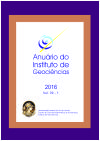An Evaluation of changes in Sea Surface Temperature during the Passage of Catarina Hurricane
DOI:
https://doi.org/10.11137/2016_1_91_98Keywords:
Sea surface temperature, Satellites, Remote sensingAbstract
This study intends to observe the sea surface temperature (SST) variation during the tropical cyclone event, which strikes the eastern coast of Brazil during March of 2004, named Catarina hurricane, using SST data estimated from two orbital sensor sources located in different part of electromagnetic spectrum that is microwave and thermal infrared. The results have shown that maximum SST cooling were approximately 2.0o C in comparison with the local SST data from two subsequent years. And the results indicated that during the hurricane way, the SST cooling really occurred, reaching the maximum values of -1.00o C and -0.99o C, when compared with daily TMI sensor data and a daily composition using TMI and AVHRR sensors data (interpolated by Barnes's method), respectively. Only microwave SST data could qualitatively represent the SST behavior; however, the thermal SST representativeness can be irrelevant during such event as Catarina. The results are quite similar to those found in the literature.Downloads
Download data is not yet available.
Downloads
Published
2017-02-15
How to Cite
Sousa, R. C. de, Paes, R. C. de O. V. and França, G. B. (2017) “An Evaluation of changes in Sea Surface Temperature during the Passage of Catarina Hurricane”, Anuário do Instituto de Geociências. Rio de Janeiro, BR, 39(1), pp. 91–98. doi: 10.11137/2016_1_91_98.
Issue
Section
Article
License
This journal is licensed under a Creative Commons — Attribution 4.0 International — CC BY 4.0, which permits use, distribution and reproduction in any medium, provided the original work is properly cited.















